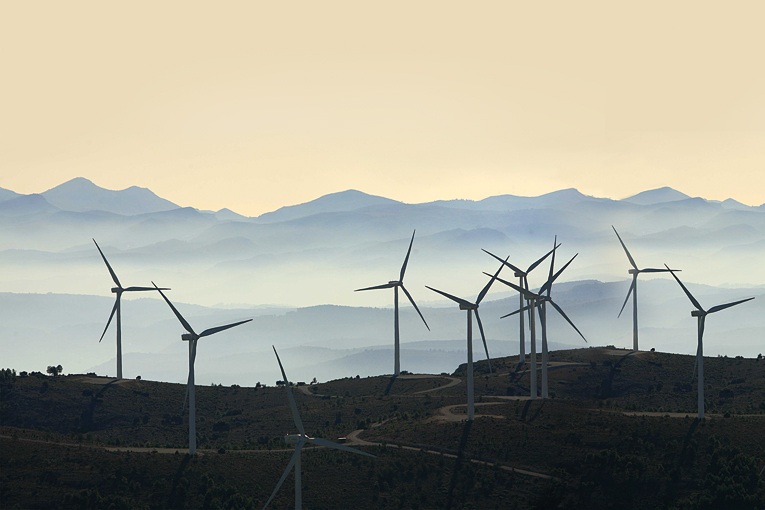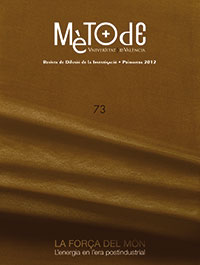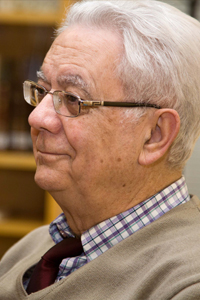
 © V. Rodríguez At the top, a wind farm. In the last thirty years, wind energy has had a major role in research. The other side of the use of this kind of energy is the impact on the landscape. |
||
|
Even though it has an important place in the development of our lives, there are today still many people who don’t know how energy works, where it comes from or how the process of getting it and using it works. The latest issue of ‘Mètode’ has as its main theme energy, an absolutely necessary element for the development of our societies, whose access regulates everyday life conditions to all societies. The sociologist Ramon Folch, recently awarded with the Ones Mediterrània prize, has been in charge of the coordination of the Mètode’s spring monographic number, under the title La força del món. L’energia en l’era postindustrial (The strength of the world. Energy in the postindustrial era). In Ramon Folch’s own words «there is a great disproportion between the importance of the energy issue and the level of knowledge and general conscience of the problem». This is the reason why experts have been called to explain such a live issue, and the bigger day by day problem that is obtaining primary energy or which are the current political guidelines for consumption. All along the monographic issue all aspects of energy have been dealt with trying to provide the keys that will determine the future, which will probably impose the use of renewable energies. In order to explain this phenomenon, we have taken into account the participation of Pep Prats I Mustarós, a member of the executive committee of the European Wind Energy Technology Platform (TPWIND), and Joan Ramon Morante, head of the Advanced Materials Area in the Catalonia Institute for Energy Research (IREC). While Pep Prats overviews the technological evolution of wind energy ever since its discovery, Joan Ramon Morante explains to ‘Mètode’ which are the open research lines to find the more efficient materials in the obtaining of solar photovoltaic energy. In the same way, professor in Sustainability and Waste Management at the Catalonia Polytechnic University Jordi Bruno, and Vicent Martínez Sancho, Physics professor at Universitat de València, say the for and againsts of the use of nuclear energy, taking part in the living debate ever since the accident in Fukushima in March 2011. Joan Vila’s, Maria Teresa Costa’s, Nuria Alonso-Borrego’s, Mariano Marzo’s, Joan Sabaté’s, Antoni Martínez’s or Luis Atienza’s articles, experts in areas like energy prices, constructions and energetic efficiency or electric market, complete the central part of the issue. An issue illustrated by the artists Sebastián Nicolau I Pep L. Poquet, which has energy as its axis, offers us an artistic counterpoint through their works, created for this issue. Moreover, in the spring issue you will meet the science historian Dominique Pestre and will find why there are craters in Mercury named after Ausiàs March, what relationship Spinoza had with the phenomenon of light and optic science or how has the General Hospital in Valencia developed since its establishment, now celebrating a 500 year anniversary. With the issue you will find also a poster made by CSIC in order to celebrate the Fascination of Plants Day –a game in which Goethe, Mendel or Darwin are protagonists. |
Cover from the latest issue of Mètode, The strength of the world, Energy in the postindustrial era, by the artist Sebastián Nicolau. The issue analyses the main aspects of the current energy problem.
|
|







